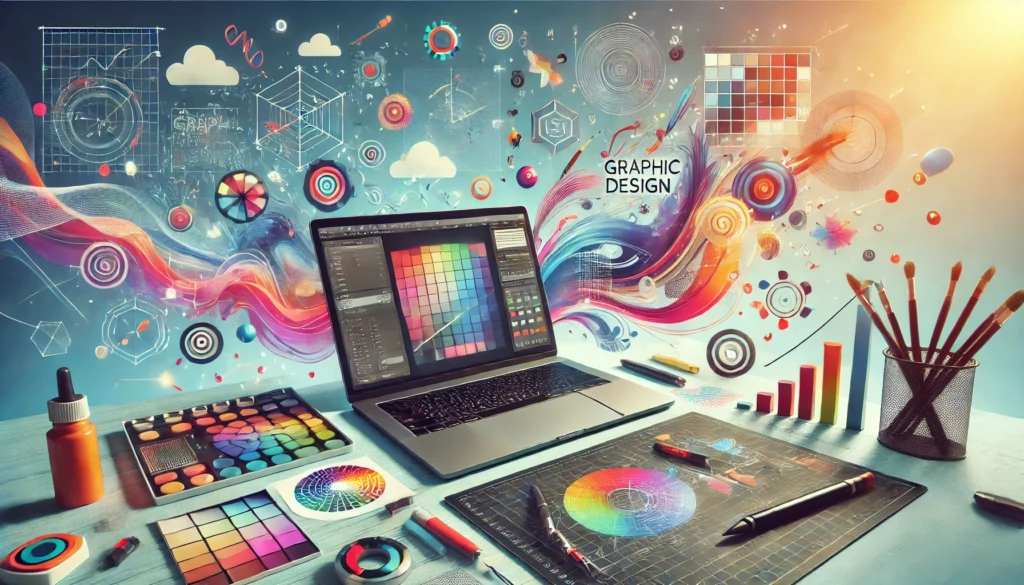
What is Graphic Design?
At its core, graphic design is the process of combining text, images, and other elements to convey a message effectively. It involves typography, color theory, layout principles, and various design software tools to create visually engaging content for print, digital, and multimedia platforms.
The Importance of Graphic Design
Graphic design is everywhere—from the logo of your favorite brand to the website you browse daily. It serves several purposes:
- Brand Identity: A well-designed logo and visual identity help businesses stand out.
- Marketing and Advertising: Eye-catching graphics enhance advertisements and promotional campaigns.
- User Experience (UX) and Interface Design (UI): Good design improves the usability and aesthetics of websites and applications.
- Information Communication: Infographics and visual storytelling simplify complex information.
Key Elements of Graphic Design
To create compelling designs, a designer must master various elements, including:
- Typography: The art of arranging text to be readable and aesthetically pleasing.
- Color Theory: Choosing color schemes that evoke emotions and convey messages.
- Composition and Layout: Arranging elements in a balanced and harmonious way.
- Imagery: Using photography, illustrations, and icons to enhance communication.
The Tools of the Trade
Modern graphic designers rely on a range of software and tools, including:
- Adobe Photoshop: For image editing and manipulation.
- Adobe Illustrator: For vector graphics and logo design.
- Canva: A user-friendly tool for quick and easy design creation.
- Figma & Sketch: For UI/UX design and prototyping.
Careers in Graphic Design
Graphic design offers diverse career opportunities in industries such as advertising, publishing, web design, and multimedia production. Some common roles include:
- Graphic Designer
- UI/UX Designer
- Brand Identity Designer
- Motion Graphics Artist
- Art Director
The Future of Graphic Design
As technology evolves, so does graphic design. Trends like artificial intelligence in design, augmented reality (AR), and motion graphics are shaping the future of the industry. Designers must stay updated with new tools and trends to remain competitive.
Conclusion
Graphic design is an essential aspect of modern communication, blending artistic creativity with technical skills to craft compelling visual messages. Whether you’re a business owner, marketer, or aspiring designer, understanding the principles of graphic design can help you create more impactful and engaging visuals.

